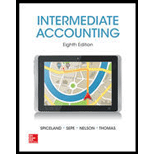
It refers to the reduction in the monetary value of fixed tangible assets over its useful life due to its wear and tear or, obsolescence. In other words, it is the method of distributing the cost of tangible fixed assets over its estimated useful life.
Straight-line Depreciation:
Under the straight-line method of depreciation, the same amount of depreciation is allocated every year over the estimated useful life of an asset. The formula to calculate the depreciation cost of the asset using the residual value is shown as below:
Sum-of- the-years’ digits method:
Sum-of-the years’ digits method determines the depreciation by multiplying the depreciable base and declining fraction.
Double-declining-balance method:
It is an accelerated method of depreciation under which the depreciation declines in each successive year until the value of asset becomes zero. Under this method, the book value (original cost less
Amortization:
It is the process of allocating the value of an intangible asset over its definite useful life.
To determine: The missing amounts in fixed assets and depreciation schedule of Corporation T.
Explanation of Solution
1. Cost of Land A:
| Asset | Fair value ($) |
Percent of total fair value (%) |
Initial valuation ($) |
| Land A | 72,000 | 8% | 65,000 |
| Building A | 828,000 | 92% | 747,500 |
| Total | 900,000 | 100.0% | 812,500 |
Table (1)
Thus, the cost of land A is $65,000.
Note:
2. Cost of Building A:
Refer 1 for calculation of cost of building. Hence, the cost of land is $747,500.
3. Estimated useful life of Building:
Thus, the estimated useful life is 50 years.
4. The amount of depreciation (Building A) for the year 2016:
Corporation T used the
5. Cost of land B:
Thus, the cost of land B is $85,400.
6. The amount of depreciation (Building B) for the year 2016:
Building B is under construction, hence there is no depreciation value before the use of building.
7. Cost of donated equipment:
The fair value of donated equipment is equal to the cost of donated equipment. Therefore, the cost of donated equipment is $16,000.
8. The amount of depreciation (Equipment) for the year 2015:
The company uses 150% declining balance method. Therefore, depreciation is determined as follows:
Thus, the depreciation is $2,400.
Working note:
Calculate the depreciation rate
9. The amount of depreciation (Equipment) for the year 2016:
The company uses 150% declining balance method. Therefore, depreciation is determined as follows:
Thus, the depreciation is $2,040.
10. Cost of Machine A:
Thus, the cost of Machine A is $99,000.
11. The amount of depreciation (Machine A) for the year 2015:
The company uses declining balance method. Therefore, depreciation is determined as follows:
Thus, the depreciation is $17,000.
Working note:
1. Calculate the sum-of-the-digits
2. Calculate the amount of depreciation base
12. The amount of depreciation (Machine B) for the year ended 2016:
The company uses declining balance method. Therefore, depreciation is determined as follows:
Hence, the amount of depreciation (Machine B) for the year ended 2016 is $5,100.
Working note:
1. Calculate the sum-of-the-digits
2. Calculate the amount of depreciation base
13. Cost of Machine B:
Note: PV factor (Present value of an annuity due of $1: n = 11, i =8%) is taken from the table value (Table 6 in Appendix from textbook).
Hence, the cost of Machine B is $30,840.
14. The amount of depreciation for Machine B –Straight line method:
Thus, the depreciation is $2,056.
Want to see more full solutions like this?
Chapter 11 Solutions
INTERMEDIATE ACCOUNTING
- I am trying to find the accurate solution to this financial accounting problem with appropriate explanations.arrow_forwardCan you show me the correct approach to solve this financial accounting problem using suitable standards?arrow_forwardHonda Corporation had beginning raw materials inventory of $34,500. During the period, the company purchased $128,000 of raw materials on account. If the ending balance in raw materials was $22,700, the amount of raw materials transferred to work in process inventory is?arrow_forward
- Mistral Inc. reported $85,000 in net profit for the year using absorption costing.arrow_forwardTransactions: Dec. 3 Wrote off Langston Corporation’s past-due account as uncollectible, $645.75. M203. 9 Accepted a 90-day, 8% note from Farris Company for an extension of time on its account, $2,400.00. NR23. 18 Received cash from Storage Solutions for the maturity value of NR19, a 90-day, 9% note for $2,000.00. R455. 21 Coastal Supply dishonored NR21, a 90-day, 8% note, for $3,000.00. M245. 30 Received cash in full payment of Langston Corporation’s account, previously written off as uncollectible, $645.75. M232 and R463. Task 1 Journalize the transactions for Miller Corporation in Questions Assets that were completed during December of the current year. Use page 12 of the general journal and page 12 of the cash receipts journal. Task 2 Post each entry to the general ledger and to the customer accounts in the accounts receivable ledger. You will not need to make entries to the Item columns of the ledgers. Task 3 Continue to…arrow_forwardFinancial accounting questionarrow_forward

 AccountingAccountingISBN:9781337272094Author:WARREN, Carl S., Reeve, James M., Duchac, Jonathan E.Publisher:Cengage Learning,
AccountingAccountingISBN:9781337272094Author:WARREN, Carl S., Reeve, James M., Duchac, Jonathan E.Publisher:Cengage Learning, Accounting Information SystemsAccountingISBN:9781337619202Author:Hall, James A.Publisher:Cengage Learning,
Accounting Information SystemsAccountingISBN:9781337619202Author:Hall, James A.Publisher:Cengage Learning, Horngren's Cost Accounting: A Managerial Emphasis...AccountingISBN:9780134475585Author:Srikant M. Datar, Madhav V. RajanPublisher:PEARSON
Horngren's Cost Accounting: A Managerial Emphasis...AccountingISBN:9780134475585Author:Srikant M. Datar, Madhav V. RajanPublisher:PEARSON Intermediate AccountingAccountingISBN:9781259722660Author:J. David Spiceland, Mark W. Nelson, Wayne M ThomasPublisher:McGraw-Hill Education
Intermediate AccountingAccountingISBN:9781259722660Author:J. David Spiceland, Mark W. Nelson, Wayne M ThomasPublisher:McGraw-Hill Education Financial and Managerial AccountingAccountingISBN:9781259726705Author:John J Wild, Ken W. Shaw, Barbara Chiappetta Fundamental Accounting PrinciplesPublisher:McGraw-Hill Education
Financial and Managerial AccountingAccountingISBN:9781259726705Author:John J Wild, Ken W. Shaw, Barbara Chiappetta Fundamental Accounting PrinciplesPublisher:McGraw-Hill Education





